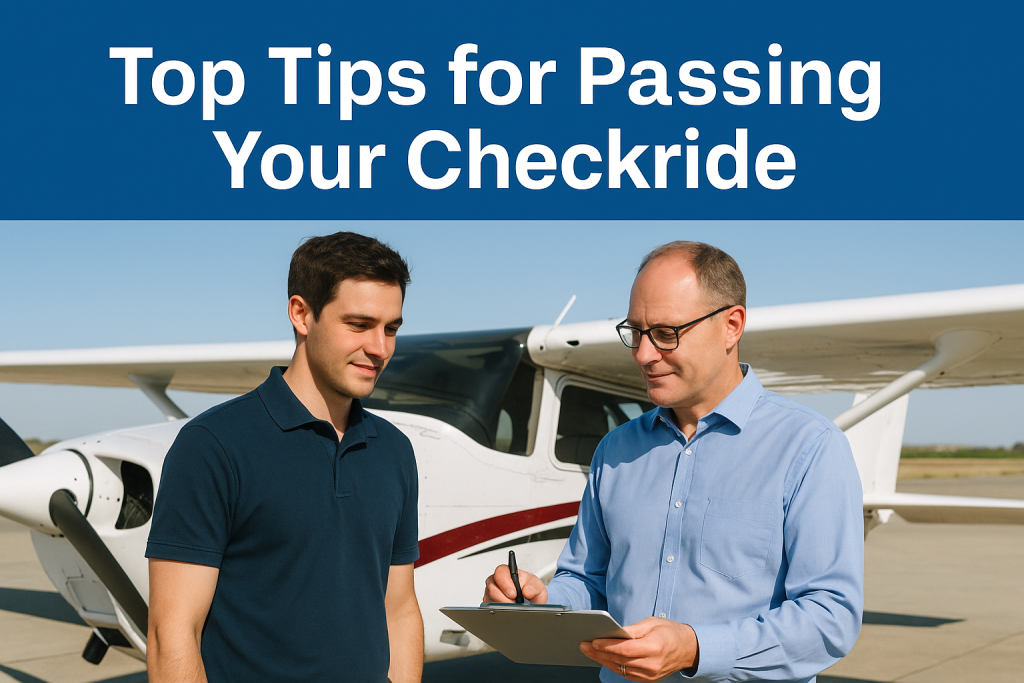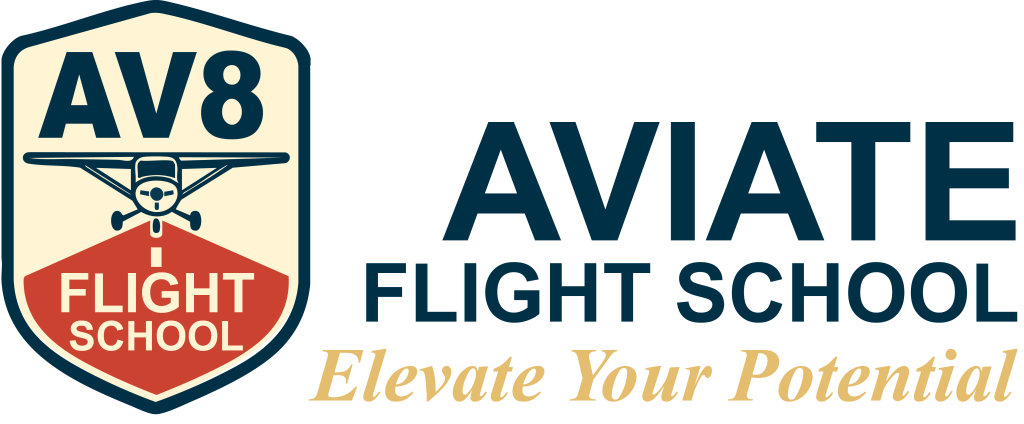- 2131 Airport Drive, Green Bay, WI 54313
- support@aviateflightschool.com
- Opening : Mon-Fri 9:00am - 8:00pm
Top Tips for Passing Your Checkride

Your checkride—officially called the Practical Test—is the final hurdle between you and your pilot certificate. Whether you’re going for your Private, Commercial, or Instrument rating, passing the checkride is one of the most rewarding moments in your aviation journey.
It’s normal to feel nervous, but with the right mindset and preparation, you can walk in with confidence and walk out a licensed pilot. Here are our top tips for passing your checkride:
✅ 1. Know the Airman Certification Standards (ACS)
The ACS is your checkride roadmap. It outlines exactly what you’ll be tested on, both in the oral and flight portions.
Tip: Don’t just glance through it—study it like a checklist. Know each task, the associated knowledge, risk management, and skill elements. Your examiner is literally grading you off this document.
📚 2. Be Prepared for the Oral Exam
Many students fear the oral more than the flight. It covers weather, systems, airspace, regulations, performance, and more.
Tip: Practice answering out loud with your instructor or a fellow student. Explain your reasoning and cite specific regulations or sections in your POH (Pilot’s Operating Handbook).
🛫 3. Fly Like You Train
The examiner isn’t expecting perfection—but they are expecting safety, consistency, and sound decision-making. Don’t try to “fly differently” on checkride day.
Tip: Stick to what you’ve practiced. If you’ve trained well, just fly your normal flight.
🧠 4. Think Out Loud
Examiners aren’t mind readers. If you’re calculating a diversion or deciding how to enter the pattern, talk through your process.
Tip: Verbalizing your thought process helps demonstrate aeronautical decision-making, which is a big part of the evaluation.
🚩 5. Handle Mistakes Like a Pro
Everyone makes small mistakes—even on a checkride. It’s how you react that matters.
Tip: If you go off course, bust altitude, or forget a checklist item, fix it, acknowledge it, and move on confidently. Don’t spiral or freeze.
📄 6. Have Your Documents in Order
Show up organized. This makes a great first impression and sets a professional tone for the checkride.
Checklist:
Government-issued photo ID
Pilot certificate and medical
Logbook (with endorsements)
Aircraft documents (ARROW)
Current charts and flight plan materials
⏰ 7. Get a Good Night’s Sleep
Seriously. Fatigue and stress can impair even the most well-prepared students.
Tip: Treat it like a performance. Hydrate, eat well, and get at least 7–8 hours of sleep.
💬 8. Build Rapport with Your DPE
Your Designated Pilot Examiner (DPE) wants you to succeed. They’re evaluating your competence and safety, not trying to trip you up.
Tip: Be respectful, professional, and positive. A calm attitude goes a long way.
✈️ 9. Don’t Rush the Checkride Timeline
Feeling pressure to “get it done” can backfire. Take your checkride when you and your instructor agree you’re truly ready.
Tip: If weather, stress, or nerves are off the charts—rescheduling is okay. The goal is safety, not speed.
🎓 Final Thoughts: Confidence Comes from Preparation
Your checkride is not a mystery—it’s a demonstration of what you already know. If you’ve trained diligently and understand the material, you’re ready.
At Aviate Flight School, we’re committed to helping every student pass confidently. From ACS-based lessons to mock orals and pre-checkride reviews, we’ve got your back.
You’ve already come this far—now it’s time to earn those wings.
